Want to learn how to save money making your own bonsai soil?
***UPDATE 04-30-2021. Lava Rock still works great over 5 years later. That’s the benefit of using lava rock for soil, it lasts nearly forever. I add sphagnum moss and bark nuggets every now and then.
You might be thinking,
“Why would anybody want to crush lava rock,”
or any kind of rock for that matter. Well, for those of us that live in, “hard to find bonsai soil” areas, bonsai soil can get very expensive. Especially when you put your bonsai in training pots that can consume 10 times the amount of soil that the average bonsai pot requires. The cheapest Lava Rock Bonsai soil I have been able to find costs about $32.65 for only 2 gallons. A 0.5 Cubic Foot bag of lava rock will make 10 gallons of soil for roughly less than $5. So, let’s get to it!


Here’s what you’ll need:
-
1 Bag Lava rock
-
1 Roll of 1/4″ 2’x5′ Hardware cloth $6.97 http://tinyurl.com/lava-rock-screen-filter
-
Handheld 3lb. sledge hammer $23.00
-
Staple gun
-
4 buckets (5 gal cat litter boxes are great to reuse)
-
Mighty Ducks coffee cup
-
Wood 2×4’s
-
Measuring tape
-
Skil saw (Table saw will be easier and safer to use)
-
Tarp
*Also, not seen in pictures are a flat head screw driver, hammer, wire cutters, a drill with 8-2″ screws, Fiberglass screen, and a dust pan for sweeping up the rocks once crushed.
Also, don’t forget the baby.
This is what I use for my bonsai soil. I mix 10-20% Sphagnum moss depending on how water retentive the species is. For my Rhododendron’s, I’ll add chopped pine bark nuggets, because they like extra water.

First, we are going to make the screen to filter 1/4″ rocks. Here, I bought 1/2″ screen. I bought the 1/2″ in hopes to create 2 screens. I was going to make one 1/2″ and then double up the screen to create one 1/4″ screen. I was trying to save from buying two different size screens. I should have bought 1/4″ as the 1/2″ is too large for the rock size I desire. So buy the 1/4″ size. You’ll be glad you did.
I made my screen 11″x9″. This was the size of my buckets (cat litter boxes). I reccommend using the whole 2×4 instead of splitting it down the middle like I did. I only did that because I didn’t have enough wood, and I thought that a 4″ height wasn’t necessary. Which after sifting 10 gallons of rock IS quite necessary. So, use the whole height of wood.
1 screw for each end piece. Your going to use 2 because your going to use the WHOLE piece of wood.
Sand the rough edges. Remember your going to be shaking this with probably your bare hands because we’re all guilty of not wearing gloves.

Cut out an apropriate size of screen for your wood.

Try to make it a little shorter than the edge. That way the rough edges wont stab you on every shake.


And voila!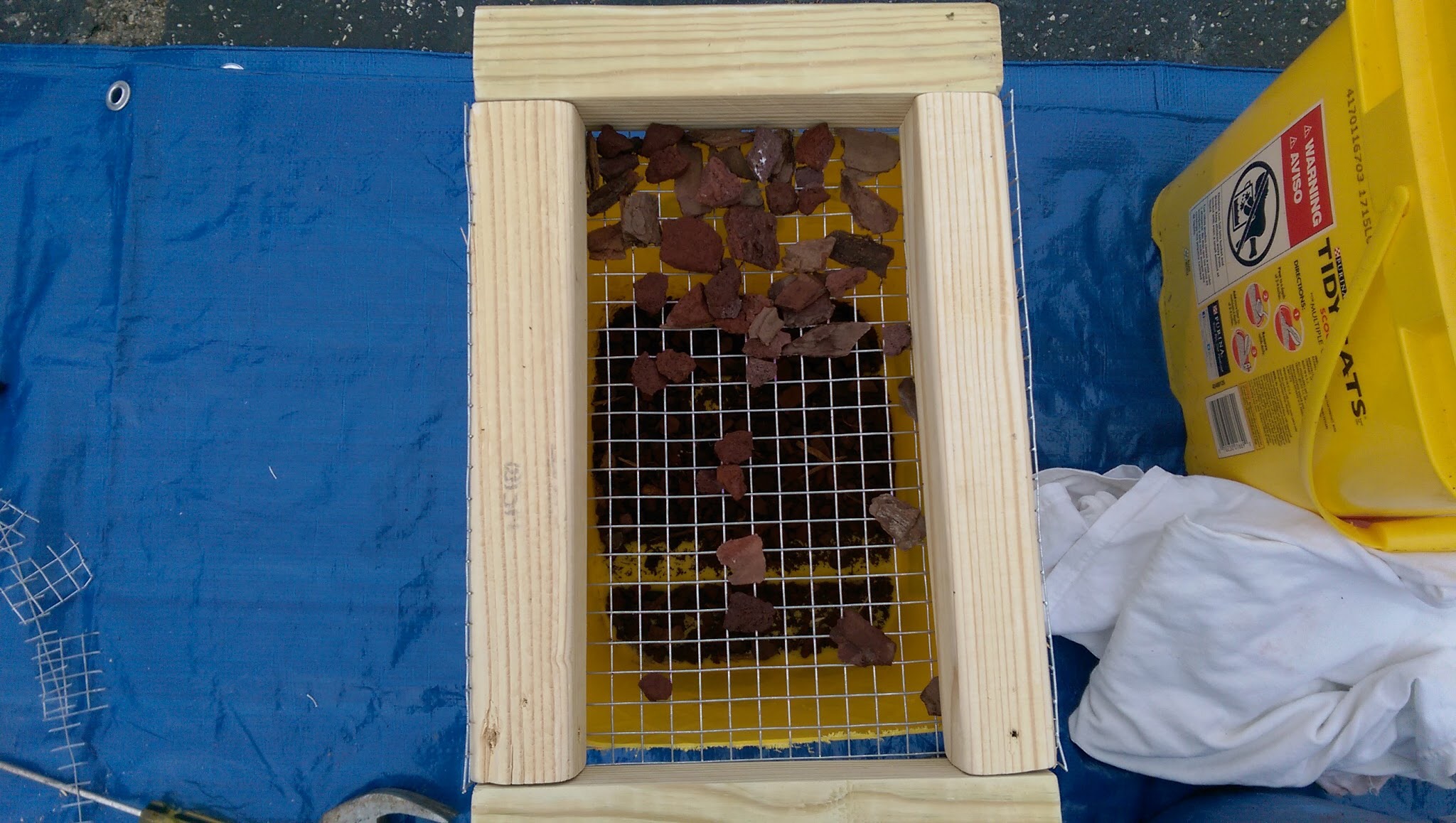

Here, you can see that I added the second screen with the same process as before. Just make sure you line it up where you want it before you staple it down. This was a trial run, before I clipped the excess. It worked great, except one teeny, tiny problem.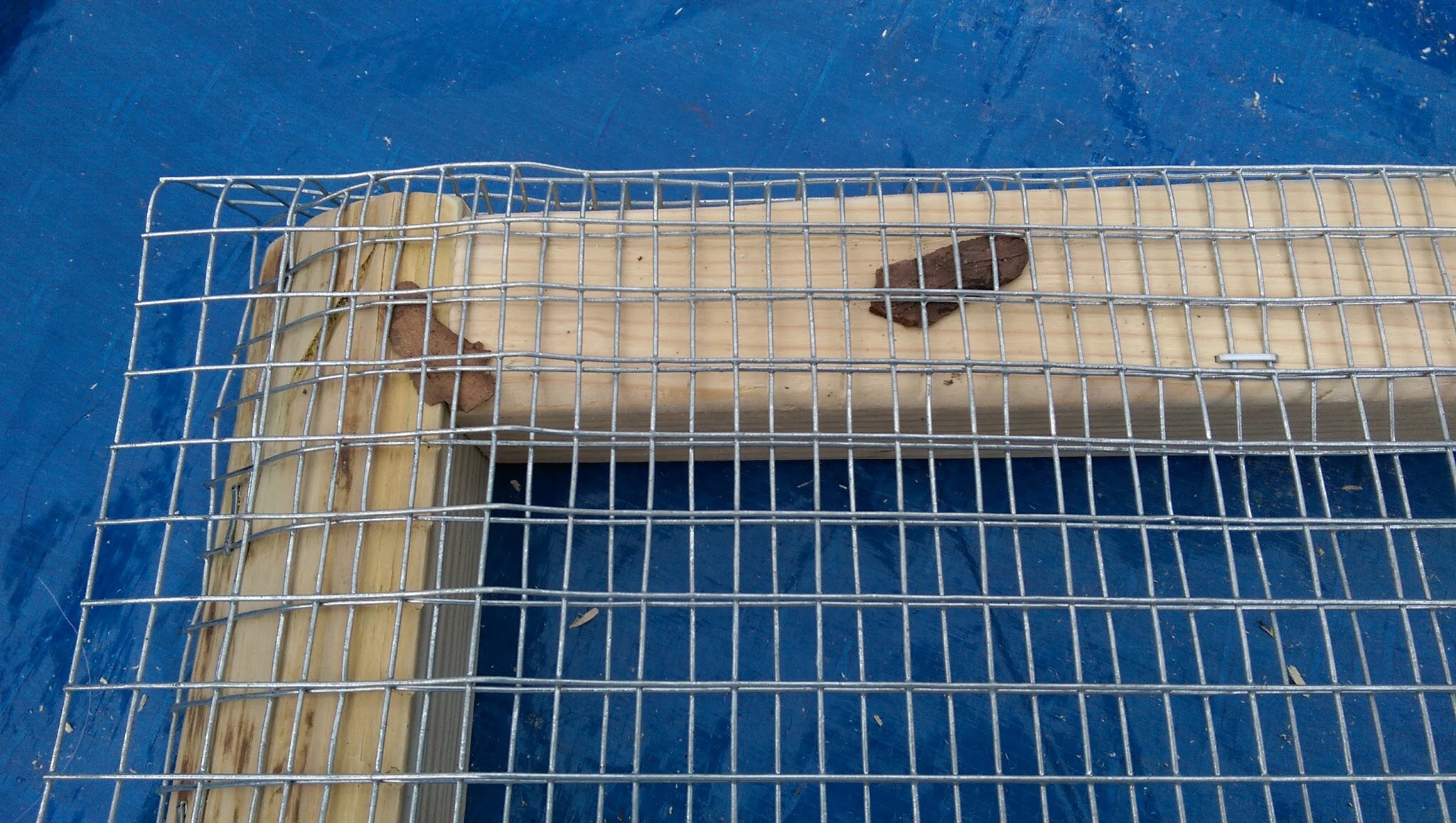
A few pieces of bark were getting stuck between the screen and the wood. I’ll be using this to sift pine bark chips as well as my lava rock.
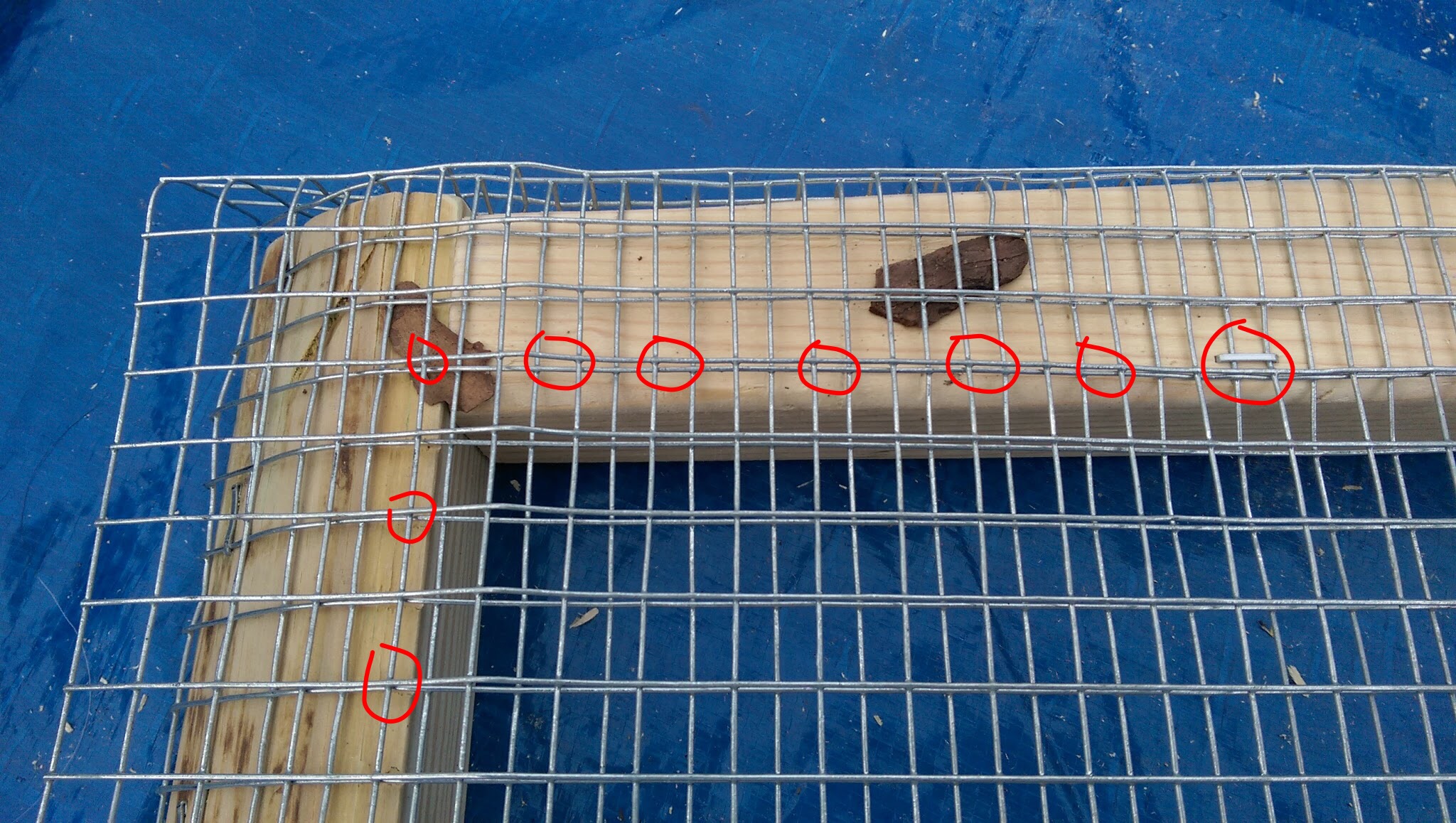
Simple fix. I added staples at the bottom edge where the wood meets the screen. It seemed to fix the problem.
Now that we have our screens ready, lets start smashing lava rock!

There’s really no trick to it, just start smashing.

I tried laying down an old, pit-stained t-shirt, but that just made a mess. I was thinking of using burlap or denim. But the best way, is to just spread it all out and go at it. This is where the tarp comes in handy.  Just make a big pile, and work your way through it.
Just make a big pile, and work your way through it.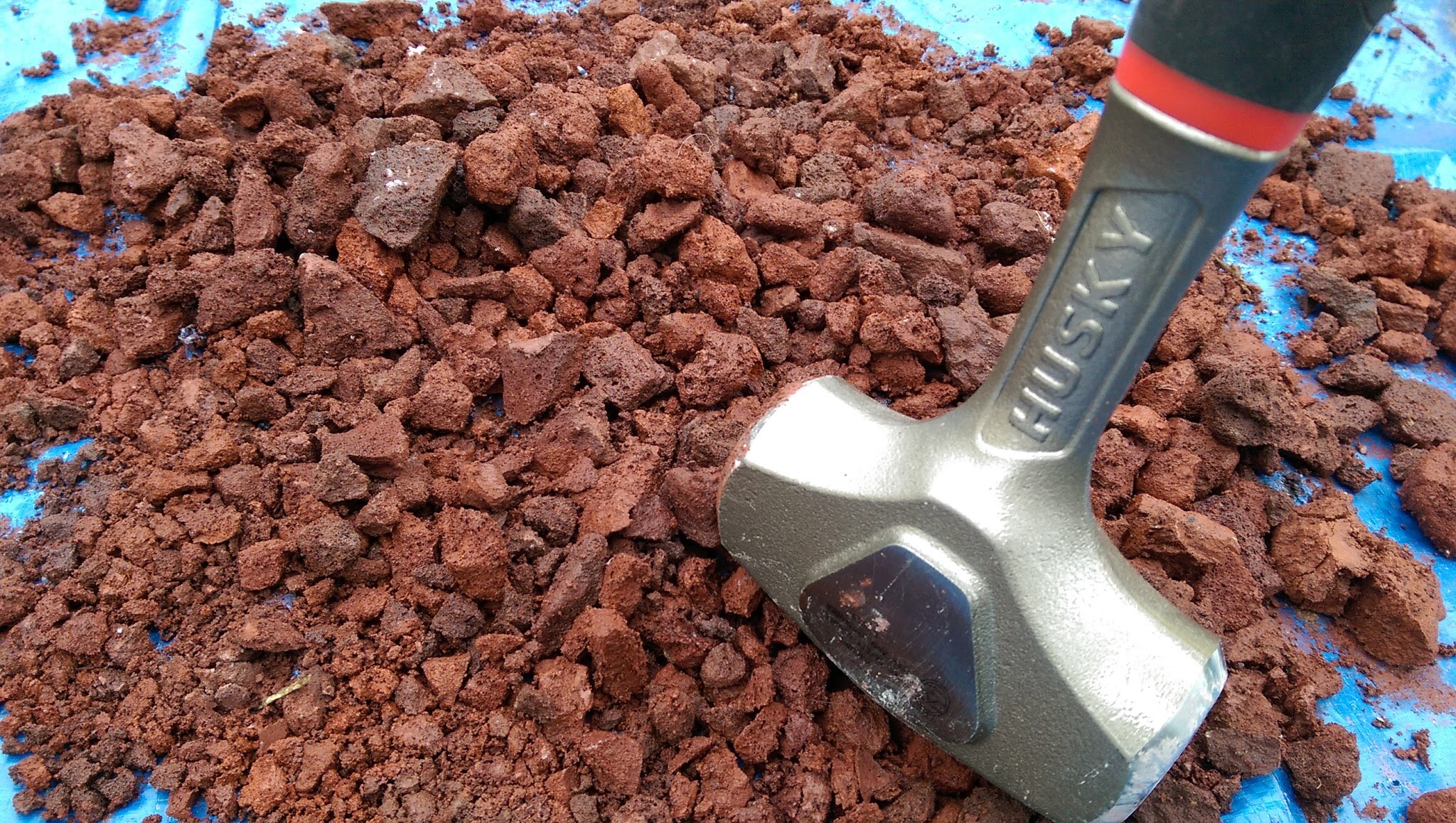
When your arm gets tired, you can use the flat edge. The rock falls apart fairly easily. It doesn’t take much strength, it’s just tiring. Then sweep it up with a dust pan, and start sifting to the desired size. It took a good two hours to crush it the way I wanted it. For less than $5, I think its well worth the effort as this stuff lasts forever.
In retrospect, I believe I should have used the entire width of the wood for the filters, instead of splitting it down the middle. It would have made it easier to hold the rocks with a deeper volume while shaking, and I could have sifted more rocks at a time.

I made another screen out of a fiberglass mesh that I found at Lowes. Then added some old handles I had laying around. They work very well for removing the dust from the rocks. I think this is the most important step. You WILL need to remove the dust, as this is the particle that when wet makes the soil compacted and mushy. Compacted soil is what we’re trying to go away from. I think this is what I bought http://tinyurl.com/lava-rock-dust-screen-filter. You can use what’s left over for drain hole covers.

Here I am sifting Sphagnum moss through the 1/2″ screen. Just take a pinch and grade it over the screen like you would cheese. 

Here I mixed 10% Sphagnum moss, 10% pine bark nuggets, and 80% crushed lava rock. 
I’ll add some of the larger rocks that I have not yet crushed to the bottom 1/4th of the pot. I just do this for volume. I’m sure it creates a little extra drainage too. This is a 2 gallon smart pot. I’m starting to realize, scale is important to readers.
And here is the final result. This is my Rhododendron Kurume Azalea. If you like growing Azaleas, here is a great resource for what tasks you should be doing by month. They require lots of water, and can burn up easily. Their blooms drain the trees resources, therefore the buds should be picked as they appear.
I want to thank Adam Lavigne over at his AdamAskWhy blog. If you haven’t check it out, go now. His blog is a, “Must Read” in the bonsai community, and a great resource for your virtual tool box. He has a great tutorial for how he makes his soil. And how his blogs suggests, you can ask him anything. He’s good at answering questions.
If you’re not already on Instagram, I suggest doing so. Not only is the bonsai community relevant there, the photos are stunning. You also get to ask questions, and connect with others like yourself.
Here is a list of people I recommend to follow on Instagram:
M_Born71 Primarily grows all sorts of Maples, and BMXing
BuffaloBonsai Cold Bonsai from the north with cold brews.
BonsaiHunters You get everything from skateboarding, artwork, and the most rad Cypress swamp bonsai hunting around the south.
AdamAskWhy Probably the most complete Bonsai Enthusiast in the world.

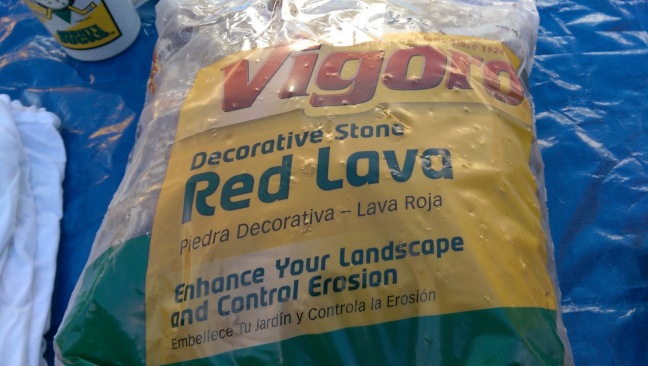
It’s as easy as that! Your how to for bonsai soil mix is the best i’ve seen so far. Very helpful and easy to follow. Why make things so complicated like i always say. We should encourage young and old to bonsai once in theur lives. Like take a kid fishing program lol. I just wanted to say thanks! Great job.
LikeLiked by 1 person
Thanks! I agree. Bonsai teaches patience…so does fishing! lol
LikeLike
At my local nursery it’s $1.50 for a 5 gallon bucket of lava rock (and every other type of soil, gravel, compost, etc).
LikeLiked by 1 person
Great supply list and article. Thanks!
LikeLike
Thanks! I thought I was crazy when writing this. Smashing rocks and all, but I know there are others like me that don’t have access to 1/4 lava rock.
LikeLike
Thank you it was very helpful
LikeLike
It is great to know the procedure to crush the lava rock for bonsai soil.I have used these steps to crush the lava rock for bonsai soil and got better result.Thanks for sharing this post.
LikeLike
It takes some time but it’s worth it. Thanks for the comment.
LikeLike
If you have any other helpful tips for bonsai soil please post it thank you your post was very helpful . The pots are very expensive so I use the bottoms of the clay pots that holds the water
LikeLike
That’s a great idea! You can also use those cheap black, plastic pots the plant usually comes in. Just chop it in half to make it more shallow.
LikeLike
Why not spread on the driveway and run back and forth over it?
LikeLike
I tried that. Although there is enough weight from the vehicle, there isn’t enough force being applied.
LikeLike
Im doing the same thing for aquaponics. too bad no one sells the small stuff
LikeLiked by 1 person
Hi Joseph,
Thanks for the post! I JUST finished doing the same thing (or at least similar). I wasn’t able to find the Bonsai soil that I need, so I went to a local landscape supply store and bought one bag of lava rock, one bag of baked clay and one bag of pine bark chunks. I wasn’t planning on producing much Bonsai “soil” so I simply smashed away at a couple of handfuls of lava rock with a 16 oz hammer. It worked beautifully for what I needed to do. Now for a total of $25 CDN I have enough raw material to keep me growing my bonsai for YEARS! I will be sure to adapt some of your technique when it comes to producing more “soil” in the spring. Great post! Thank you!
Happy growing!
LikeLiked by 1 person
Is the red dye in the lava rock safe for plants ?
LikeLike
I’m not sure. I don’t believe it is a dye as much as it is the color of the rock if that makes sense. Many bonsai enthusiasts use lava rock for their bonsai soil and recommend it.
LikeLike
Would crushed lava rock sell for crop fertilizer? I come from a very active volcano island with millions & millions tons of volcanic lava rock.
LikeLike
I believe so. indoor gardening is becoming very popular. It’s great for Aquaponics systems like because the porous rock gives a spot for the good bacteria to live that is needed to break down fish waste. Watch this video on how it works: https://www.youtube.com/watch?v=-z1kozprw8Y
LikeLike
Hey thanks for the article. Crushing rocks is a simple thing but now I know it’s practical. The big box store just has large chunks for bbq grills so I was wondering if I could do this. Going to get some tomorrow!
LikeLiked by 1 person
I still have my lava rock today. It was a lot of work. Good luck!
LikeLike
I can’t find any specific lava rock for landscaping in my area but I’m wondering if Lava Rock for charcoal BBQ’s is the same thing. Any idea?
LikeLike
I’m pretty sure the lava rock you would use for a fire place or fire pit is the same as landscaping lava rock. Not certain. I think they are just died and marketed a different color to make it look more appealing for that application. Try it and find out.
LikeLike